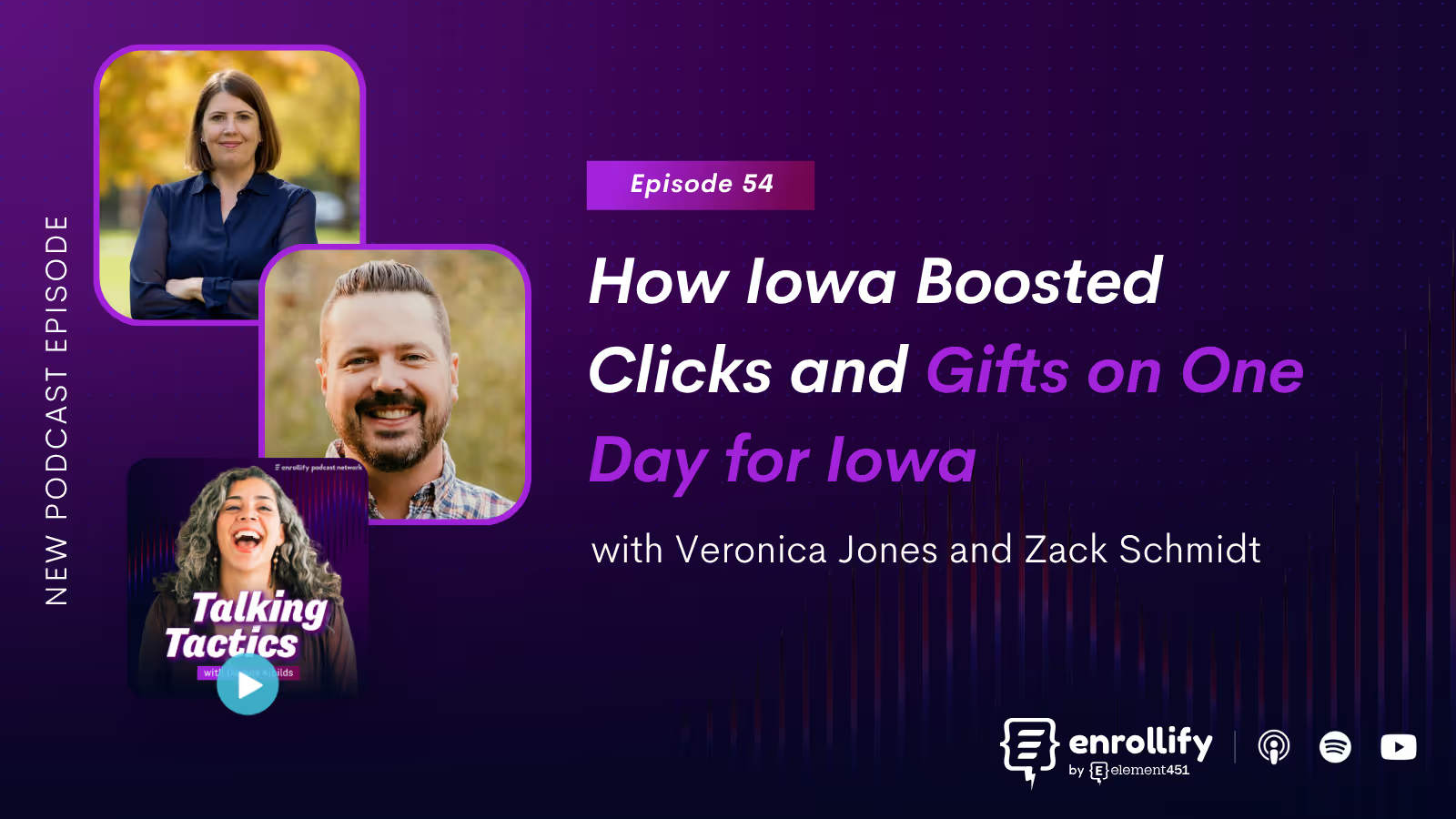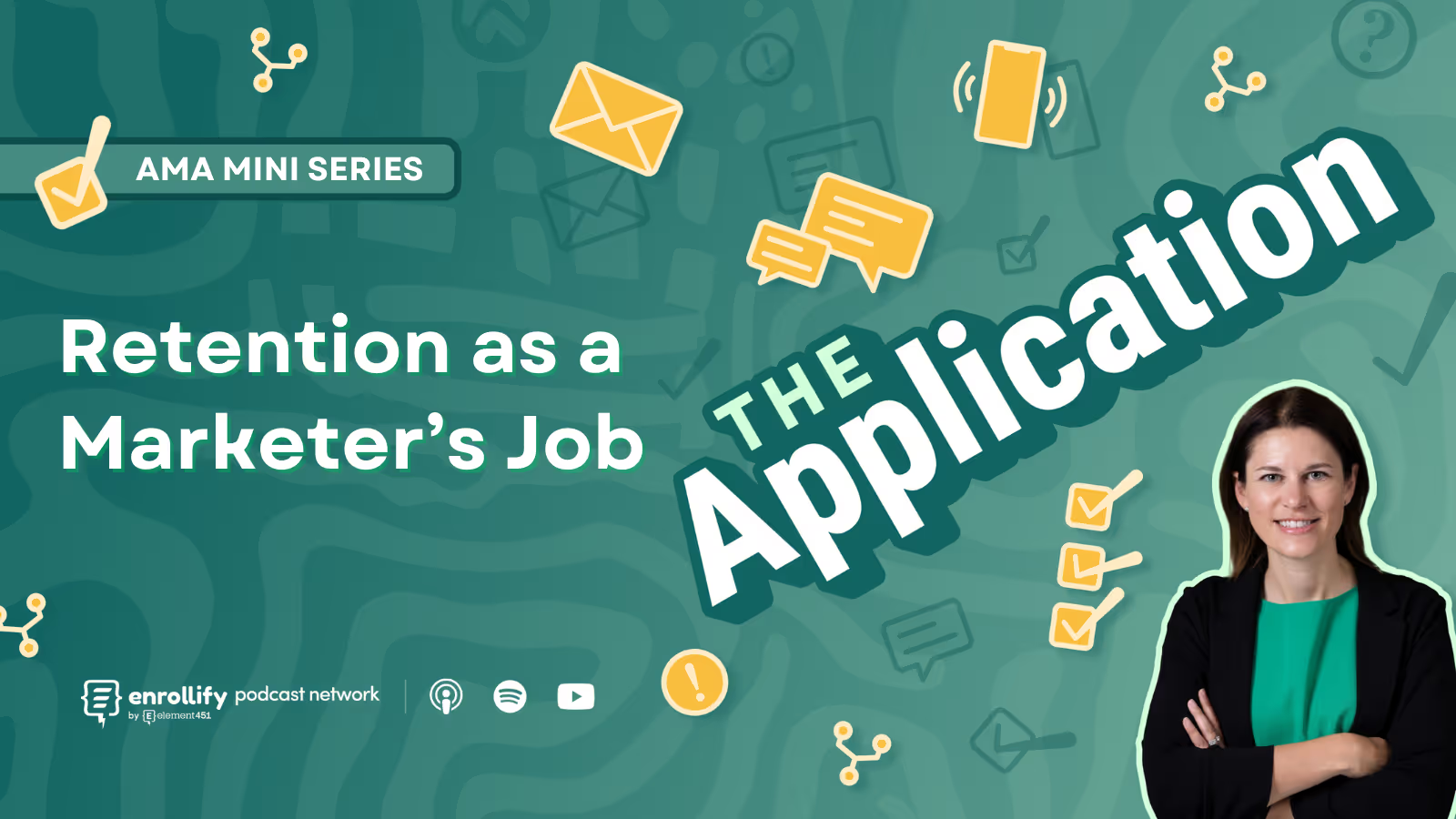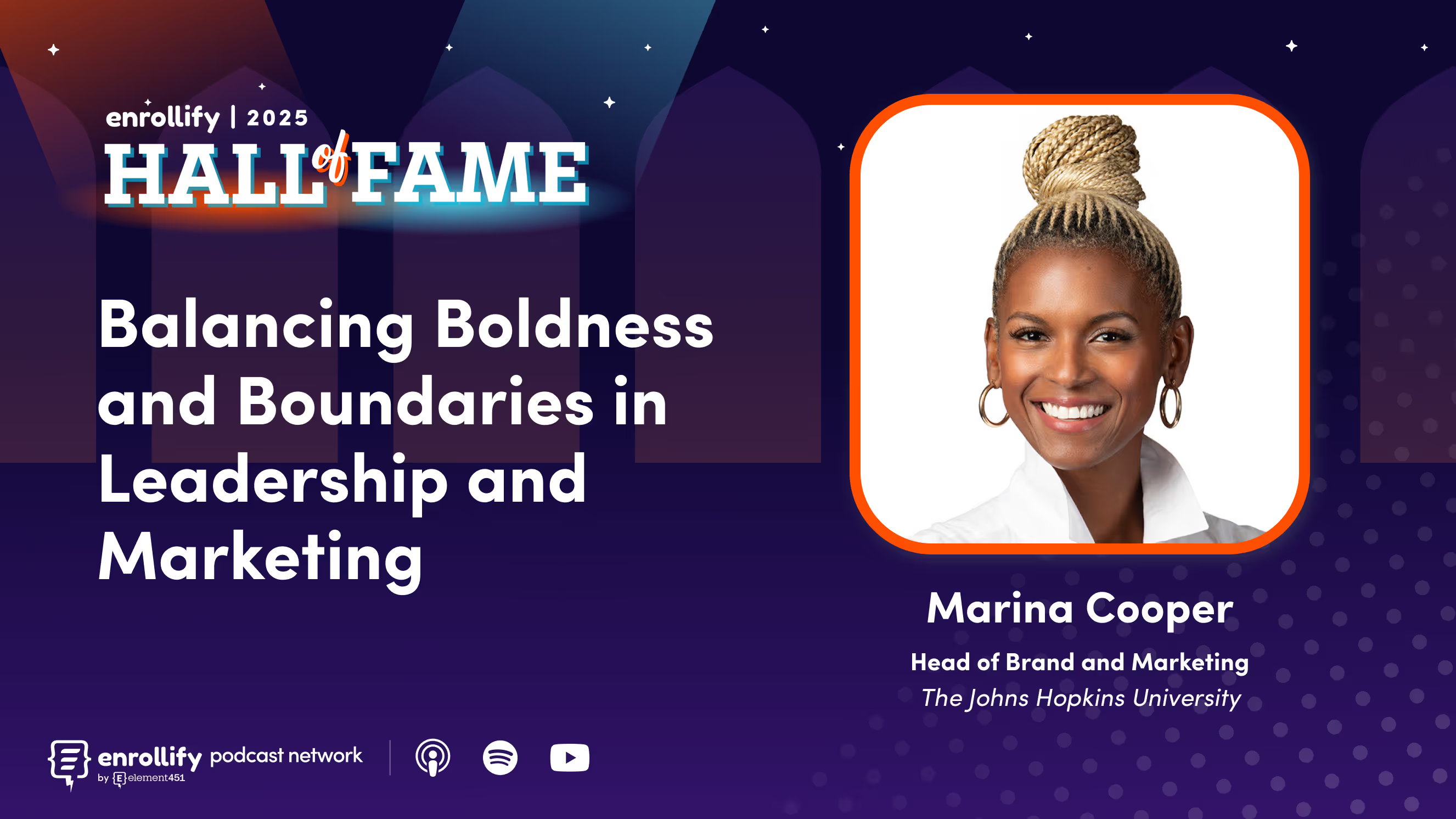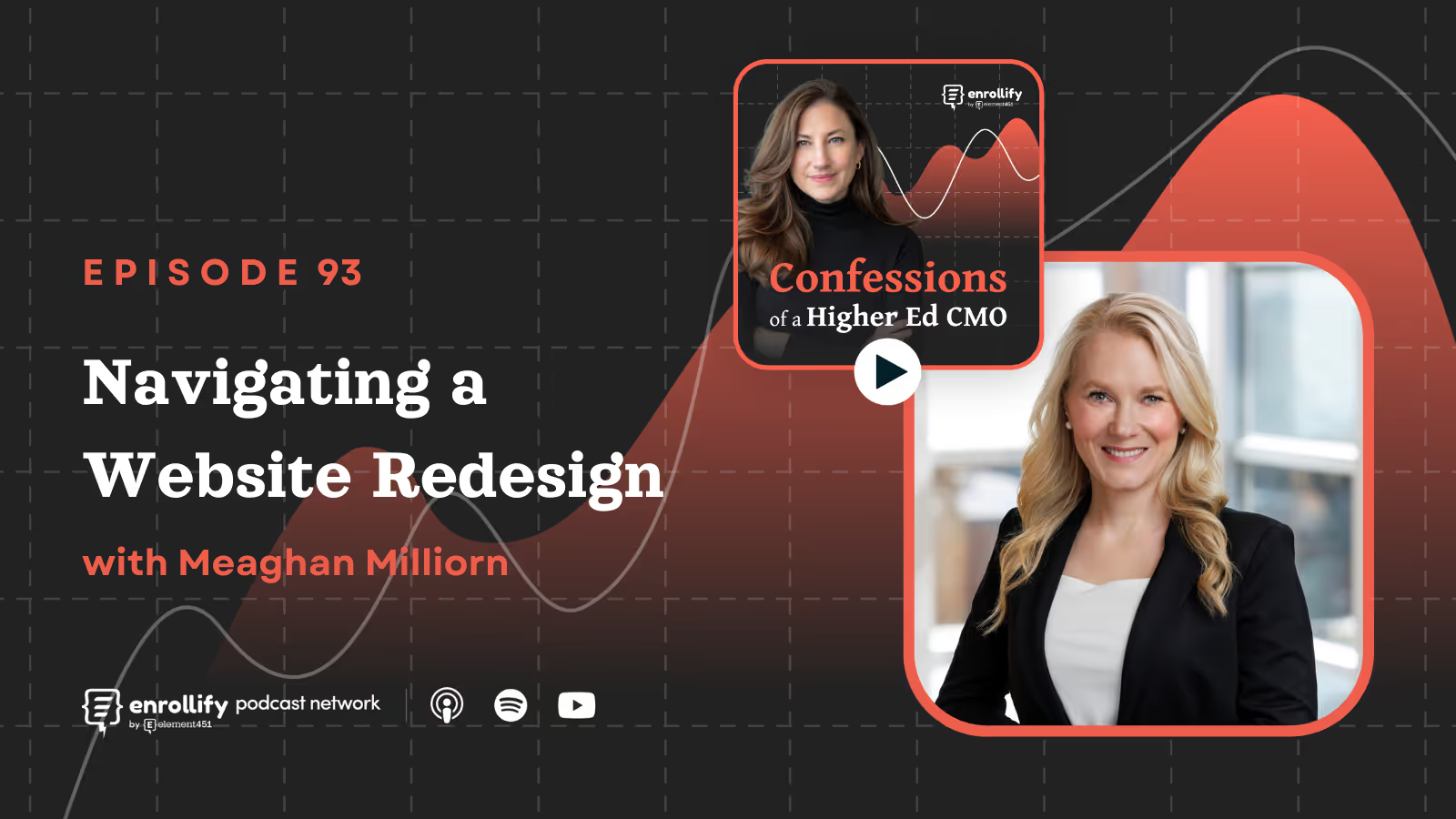About the Episode
Got a story to tell? An innovative idea to share? Fill out our guest nomination form and let's chat!
About the Episode:
What if a few strategic email decisions could boost your click-through rates by 73% and gifts by 26% on your giving day? On this episode of Talking Tactics, Day sits down with Veronica Jones and Zack Schmidt from the University of Iowa Center for Advancement to unpack how they moved from a time-consuming email process to a smart, automated strategy that actually improved the donor experience. If you're looking for better ways to connect with alumni and donors during your next giving day — and drive real results — this episode is your blueprint.
Key Takeaways
- A CRM switch can supercharge your Giving Day strategy. By moving to Salesforce and Marketing Cloud, the University of Iowa automated decision splits based on real-time donor behavior.
- Segmented and personalized content drives results. Tailoring emails by grad year, donor status, and geography led to more relevant experiences for alumni and donors.
- Automation reduced errors and saved time. Replacing 50+ data files with one dynamic file led to over 12 hours of saved staff time and zero data mistakes.
- Smart decision splits reduce donor fatigue. Suppressing emails for those who already gave improved donor experience and increased conversion.
- Small changes made big impacts. The team saw a 73% increase in email clicks and a 26% rise in donations through email alone—without radically changing their strategy.
How did the University of Iowa identify the need to revamp their Giving Day email strategy?
In the ninth year of “One Day for Iowa,” the advancement team had developed a robust—but highly manual—email and communications strategy. Despite eight scheduled emails in March and visible donor engagement, tracking wasn’t giving a full picture. Many donations appeared to come through the website rather than directly from email clicks, indicating underperforming attribution. Worse yet, donors were getting multiple emails even after giving, creating frustration. The team knew something had to change, especially with the inefficiencies and potential for human error during manual processes.
What technology and tools did they implement to improve the process?
The institution had just adopted Salesforce and integrated Marketing Cloud, opening new possibilities for automating user journeys. With this change, they could finally design decision splits based on real-time donor behavior—like whether someone had opened an email, clicked a link, or made a gift. Partnering with an implementation consultant, they mapped out user journeys, wireframed the logic, and built a campaign infrastructure that cut down on manual work and made the experience more relevant for recipients.
What are decision splits and how were they used effectively?
Decision splits are logical branches in a user journey that determine what email someone receives next based on specific behaviors or attributes. For instance, a recipient who gave early was removed from the main campaign and instead received a “thank you” or engagement email with options like uploading photos for a digital mosaic or participating in social challenges. Another example: those who clicked but hadn’t donated yet received gentle nudges akin to “abandoned cart” emails. This personalized approach ensured no donor received irrelevant or redundant messaging.
How was segmentation improved and what kind of data fueled these journeys?
Instead of using more than 50 segmented files like in previous years, the team built a single massive file with all the relevant segmentation variables: faculty/staff status, donor status, graduation year, ZIP code, and more. This streamlined the campaign from a logistics standpoint and reduced the risk of human error. Plus, this data empowered custom versions of emails—for example, regional time zone sends at 7 PM local time, ensuring recipients saw relevant challenges and donation opportunities in real-time.
What challenges did they face during this transformation?
Change management was a big hurdle. As Veronica Jones pointed out, annual giving often thrives on consistency, and introducing a major new system mid-cycle felt risky. Balancing innovation with brand consistency meant resisting the temptation to overhaul everything. On the tech side, the team had to ensure that the new system allowed them to pull out donors quickly in case of complaints or external disruptions (like a natural disaster). But these were addressed through careful QA and flexible campaign design.
What kind of results did they achieve?
The results speak for themselves. The revamped strategy led to:
- A 73% increase in email click rates
- A 26% increase in tracked donations via email
- More than 12 hours saved on data processing
- Fewer complaints and donor fatigue due to smarter suppression and personalization
Perhaps most impressively, the University of Iowa smashed its $3 million Giving Day goal by noon and finished the day at $4.8 million in gifts. This outcome not only validated the new approach but also sparked excitement for what's possible in future campaigns.
If this success story doesn’t inspire you to rethink your Giving Day strategy, we don’t know what will. The team at the University of Iowa proved that you don’t need to change everything—just the right things. By keeping their core strategy intact and improving the operational engine behind it, they delivered a better experience for donors and their staff.















